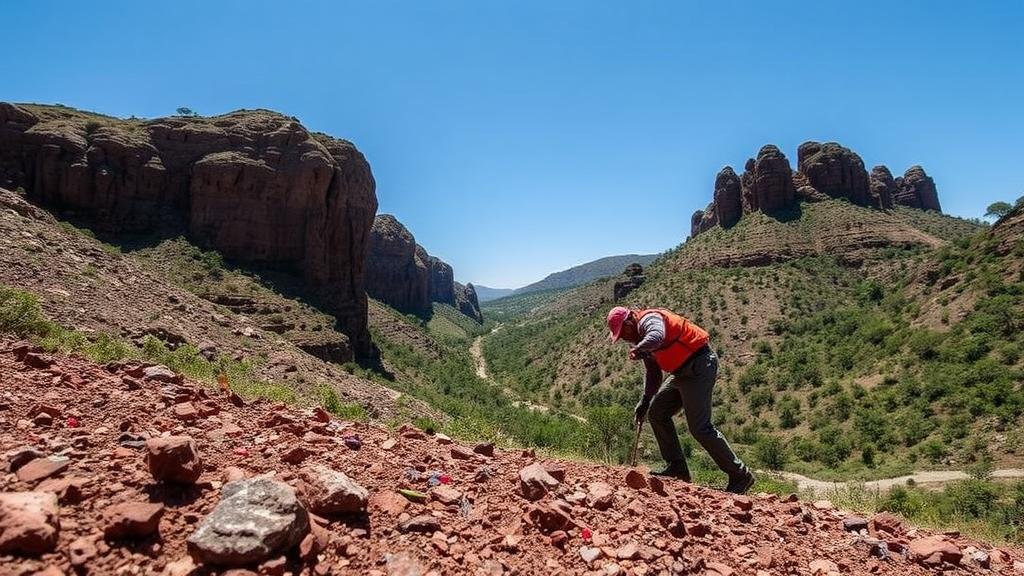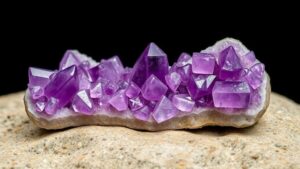Searching for hidden deposits of rubies in Tanzania’s Winza region.
Searching for Hidden Deposits of Rubies in Tanzania’s Winza Region
Tanzania is renowned for its rich mineral resources, and the Winza region stands out as a notable hotspot for rubies. Rockhounds and mineral collectors from around the globe are drawn to this area, seeking the elusive and exquisite gemstones. This article explores the geological features of Winza, the characteristics of its rubies, and practical tips for those looking to uncover hidden deposits.
The Geology of Winza Region
The Winza region, located in central Tanzania, features a complex geological framework that is rich in metamorphic rocks, particularly marbles and gneisses. e formations often provide the necessary conditions for the formation of corundum, the mineral from which rubies and sapphires are derived. The metamorphosed limestone and other associated sedimentary rocks contribute to the unique mineralogical environment attributed to ruby deposits.
Also to metamorphic processes, pegmatitic formations may also trap minerals during their cooling stages, leading to pockets of rubies. Understanding the geological setting is crucial for rockhounds as it guides them to locations where rubies are most likely to be found.
Characteristics of Winza Rubies
Rubies from the Winza region are revered for their vivid red color, attributed largely to the presence of chromium. typically display a range of hues, from pinkish-red to deep crimson. The quality can be assessed through several criteria:
- Color: Vibrancy is key; the more vivid the red, the higher the value.
- Clarity: Rubies with fewer inclusions are typically more desirable.
- Cut: Expert cutting can enhance the gems color and brilliance.
- Carat weight: Larger stones command higher prices, but size should not compromise quality.
According to the Gemological Institute of America (GIA), natural rubies can retail for as much as $1,000 to $3,000 per carat, depending on their characteristics. Winza rubies, due to their unique color and origin, can fetch higher prices in the market.
Practical Tips for Rockhounds and Collectors
Exploring the Winza region for rubies can be an exhilarating experience, but certain considerations are necessary for successful collection:
- Research Local Regulations: Before heading out, familiarize yourself with local mining laws and regulations to ensure you’re collecting legally. Some areas may be restricted or require permits.
- Join Local Tours: Engaging with local gem miners can provide insights into the best locations and techniques. Many guides know the land intimately and can point you toward promising areas.
- Invest in Proper Gear: Ensure you have the right tools, including digging equipment, safety goggles, and sturdy footwear to navigate rough terrains.
- Be Patient and Observant: Finding rubies may take time. Look for signs of mineralization–such as color changes in the soil or the presence of quartz veins–indicating potential deposits.
Real-World Applications and Community Engagement
Finding rubies also fosters community ties as it promotes local economies. Many successful collectors and miners reinvest their findings into the community, creating a sustainable model for both mineral collection and local development. Also, collaborating with geological surveys and local authorities can lead to the safer and more responsible extraction of resources.
Conclusion
The Winza region of Tanzania is a treasure trove for rockhounds and mineral collectors seeking rubies. With its rich geological background, inclusive community, and the potential for high-value finds, it presents a unique opportunity. Understanding the geological formations, recognizing the characteristics of rubies, and adhering to responsible collecting practices will not only enhance your chances of finding hidden deposits but also ensure the sustainability of this precious resource.
As you prepare for your trip, remember to engage with local communities, respect wildlife, and abide by all regulations. The excitement of searching for rubies is amplified when it’s done thoughtfully and ethically.



